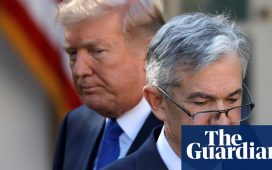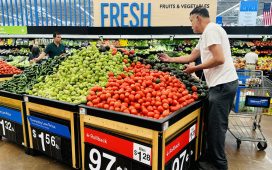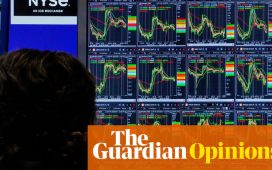In 2012, shortly before becoming China’s top leader, Xi Jinping visited the Port of Los Angeles to discuss boosting trade. What then looked like a locus of cooperation has now become another site for suspicion as Sino-American relations remain tense. Last month, the Biden administration announced $20bn of funding for port infrastructure, much of it to replace cargo cranes that have almost all been made by a state-owned Chinese firm. The US is concerned because the sophisticated pieces of equipment manage information about containers and their contents, their origins and their destinations – and can be remotely programmed and controlled. It wants to restart domestic production of the cranes, which have not been made in the US for decades.
The move comes amid a much broader economic rethinking: what the EU foreign affairs chief, Josep Borrell, last year described as “a paradigm shift from the primacy of open markets to the primacy of security; from ‘just in time’ to ‘just in case’”. The pandemic was a wake-up call, forcing nations to scrutinise their supply chains, and ask whether they had sacrificed resilience for efficiency. The climate crisis is already affecting logistics: low rainfall in Panama has forced the authorities to limit vessels using the canal. Cyber-attacks by criminal actors are another concern. The Japanese port of Nagoya was put out of action by a ransomware attack last summer. But current conflicts and geopolitical divides are driving the changes.
Consumers are still paying the price for Russia’s invasion of Ukraine as result of supply chain disruptions caused by the war and the west’s drastic sanctions on Moscow. More than half of UK retailers and exporters have been affected by the disruption to Red Sea trade from Houthi rebel attacks on cargo ships, according to a survey published by the British Chambers of Commerce last month. It found that the cost of shipping a container from Asia to Europe had risen by as much as 300%.
Talk of “slowbalisation” has been succeeded by prescriptions for “onshoring”, “friendshoring” or at least “nearshoring”. The EU decided that “decoupling” from China was too strident, but pursues “de-risking”. Beijing has long sought to systematically reduce reliance on the west. Last year, trade between the US and China fell by 17% – albeit from a record high of $2bn a day the previous year – with Mexico becoming the biggest exporter of goods to the US for the first time in two decades.
The shift should not be overstated. This is not so much deglobalisation as what has been termed “glocalisation”: an unlovely hybrid term that perhaps accurately reflects the awkward mix of the forces in play. In some cases, countries may be acquiring the same resources, just via intermediaries: oil from Russia is still reaching Europe, having been processed in India.
In the case of the US ports, Washington has longstanding complaints about economic espionage by China, and about Beijing’s cyber activity. But, particularly as concerns about Taiwan’s future grow, it appears increasingly worried about how a clash with China could affect logistics – and not merely because it fears economic pressure could be used as leverage, but because it is concerned that the movement of military personnel and resources could be hindered. As tensions rise, countries are not only seeking to war-proof their economies, but also to logistics-proof potential wars.








